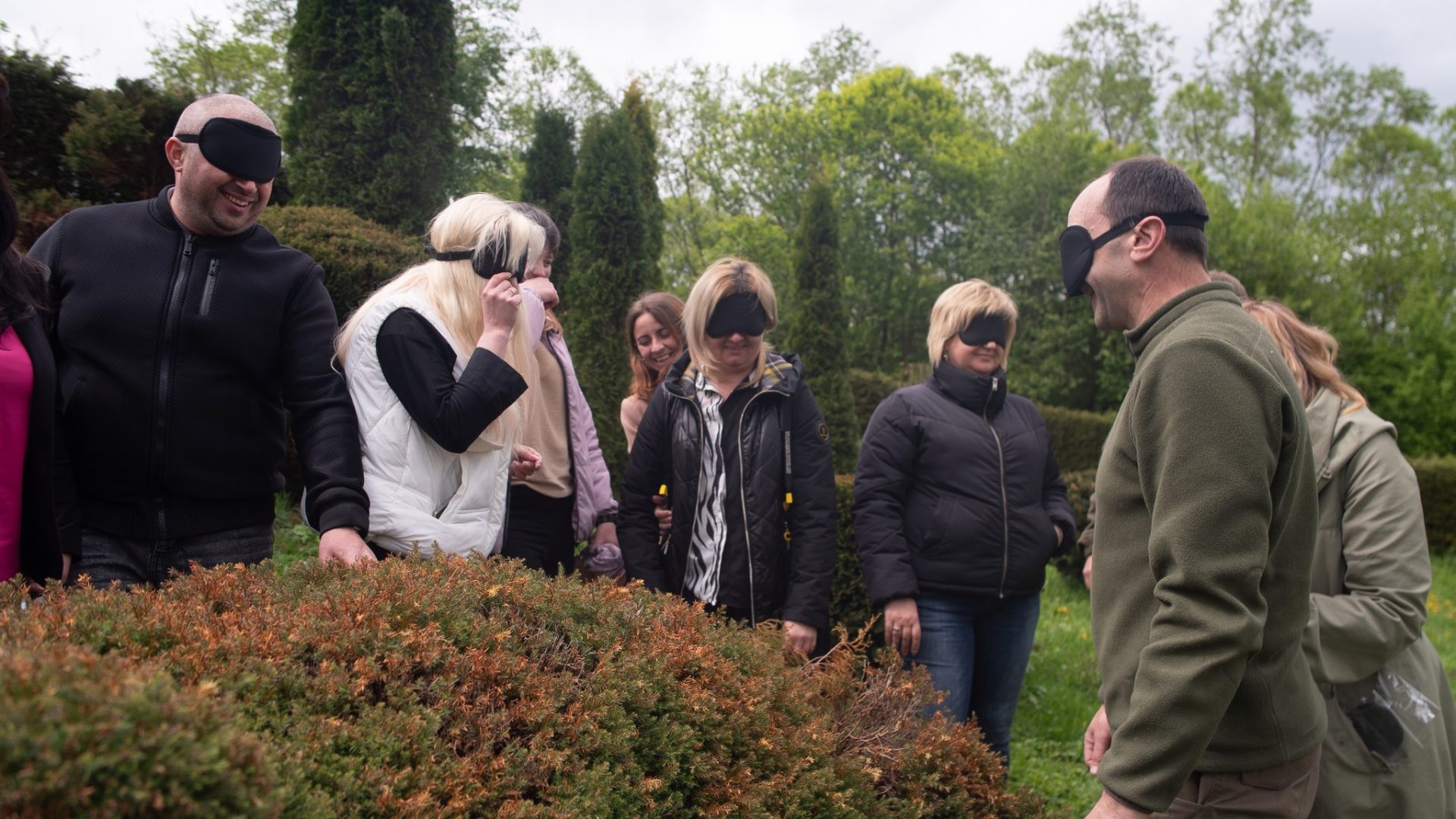A training course on nature interpretation has been held for the parks’ employees

Last November, we began to mentor updating environmental education programs, and in April, we held a training on nature interpretation.
Hannah Kuzio, FZS Protected Area Environmental Education Coordinator, explains:
“Nature interpretation is about conveying the value of natural heritage to visitors in a fascinating way. It teaches visitors, especially children, to take bright emotions and love for nature from the tour.”
In FZS, we are sure that respectful attitude to nature should be raised from childhood. When lessons with pupils take place in nature, they see practically the importance of the environment. So, during the studying, employees of the protected areas were taught how to involve children in nature in the open air. After two days of theoretical (but mostly practical) studying the participants had to develop their own projects on nature interpretation.
Nataliya Hudkova, PhD in Biology, Associate Professor of the Department of Methodology of Education for Sustainable Development of the State Ecological Academy of Postgraduate Education and Management arranged the training.
For example, Nataliya demonstrated a method to involve in nature by touch. The participants wore sleep masks and oriented themselves by the voice of their colleagues. This method is effective to talk about inclusiveness as mask gives an opportunity to be in blind person shoes.
After studying the employees were supposed to present their own 10-minute interpretations. The participant from Verkhovynskyi National Nature Park made a play about spawning of trout. He gave roles to his colleges. There were male and female trout, a poacher, and rangers. The “actors” demonstrated the trout courtship, catching the fish, and getting a fine by a poacher.
Such a theater is popular in nature interpretation because it involves “actors” and gives bright emotions. Hannah Kuzio admitted the participants’ creativeness and sense of humor:
“The next task is to find “your” theme to involve children in nature. It could be anything from wildlife like birds, plants or fish”.
The ornithologist from Verkhovynskyi National Nature Park interpreted nature by making a choir. He began with a story about the bird of chiffchaff, then turned on the recording of its song. After that everybody got a note to sing, and together they made the bird’s song.
The theme of the participant from the Synohora National Nature Park story was the tree of spruce. He described the value of this tree for the locals by pointing the buildings and other stuff made of that wood.
Oleksii Kovalenko is a scientist and the author of science fiction books about plants and mushrooms. He works at the Ukrainian National Museum of Natural History by arranging lectures and educational interactive programs. His online training was about quests. Oleksii explained how to make a show while talking about nature.
Botanics is the main Oleksii’s interest, but he is ready to dive deeply in any scientific topic for making a great program for visitors. At the training he shared this idea with the participants.
At the very end of the training, the educational department of every protected area got a starter kit with different tools for classes in the open air. It contains a backpack, tablets, binoculars, magnifying glasses, insect models, task books, cards, and other visual aids. The next step for protected areas employees is to create 5 nature interpretations for children.
“The employees got knowledge and tools. Now we are expecting to see the fulfilment of the programs during warm seasons. They are supposed to take children to the territory of the protected areas as often as possible”.
We want to see more classes in the nature, so continue to mentor and support partner protected areas!
News












